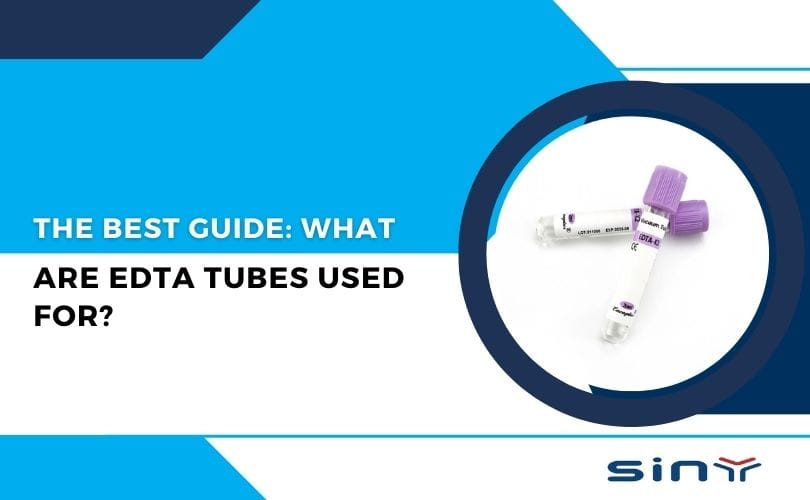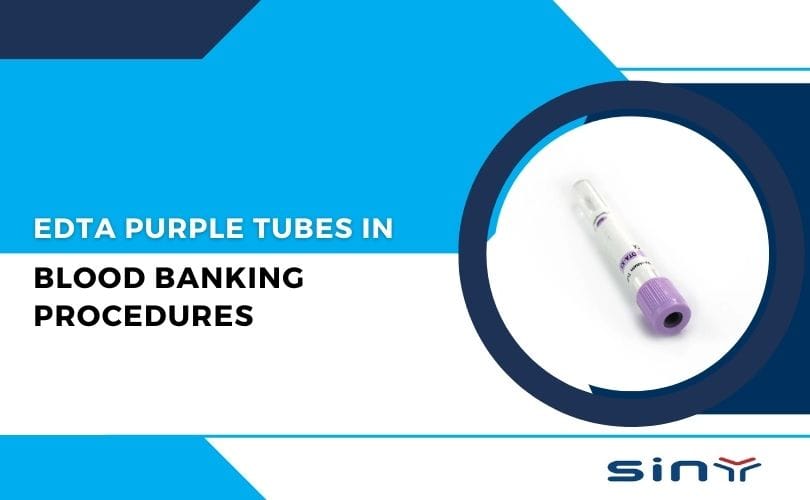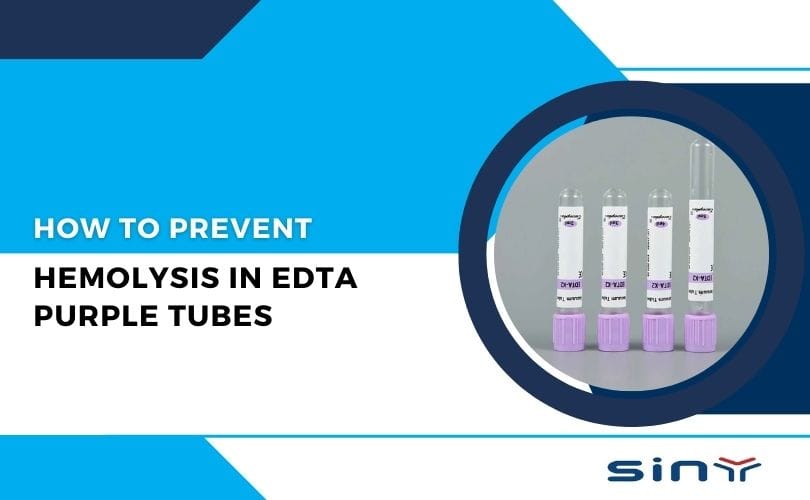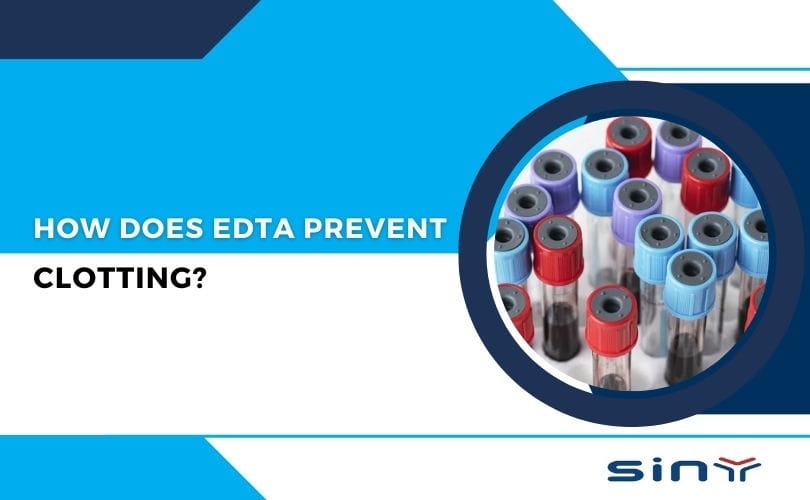The materials used in EDTA tubes for blood collection and laboratory applications. EDTA tubes are among the most trusted tools in modern medical diagnostics. Their design, composition, and high-quality construction ensure accurate results for every sample. Understanding the specific materials used in EDTA tubes not only enhances safety but also contributes to the reliability of lab results and the integrity of each diagnostic procedure.
For a comprehensive overview of EDTA tubes, you can always explore our full introduction to EDTA tubes or contact our team through our contact page.
The Essential Materials Used in EDTA Tubes
Medical-Grade Tube Material: PET Plastic and Borosilicate Glass
The primary component of any EDTA tubes is its tube body, which is vital for durability, sterility, and compatibility with blood specimens.
Polyethylene Terephthalate (PET):
PET is a highly transparent, virtually unbreakable medical-grade plastic widely used for its resistance to chemicals and permeability, maintaining vacuum pressure within the tube. PET tubes are preferred due to their lightweight, impact resistance, and ability to keep samples stable during transport and processing.
Borosilicate Glass:
For procedures requiring enhanced chemical inertness and thermal stability, borosilicate glass tubes are an alternative. This specialized glass resists chemical leaching and thermal stress, making it ideal for delicate or long-term studies.
Leading manufacturers such as Siny Medical and edtatube.com utilize medical-grade PET and borosilicate glass to ensure every EDTA tube meets stringent lab and regulatory demands.
EDTA Anticoagulant: K2 EDTA and K3 EDTA
The core functional additive of EDTA tubes is Ethylenediaminetetraacetic acid (EDTA). This is a highly effective anticoagulant that binds (chelates) calcium ions in the blood, thereby preventing coagulation and preserving the original morphology of blood cells.
Types of EDTA Used
K2 EDTA (Dipotassium EDTA): Supplied as a dry powder or spray-dried coating inside the tube, K2 EDTA maintains balanced osmotic properties and is the gold standard for most hematology tests.
K3 EDTA (Tripotassium EDTA): Provided as a liquid or powder. K3 EDTA is particularly effective in preventing any change in blood parameters while strongly inhibiting calcium-dependent clotting pathways.
Both K2 EDTA and K3 EDTA are available in EDTA tubes for blood collection, and you can learn more about the manufacturing and application processes via our EDTA tube product guide.
Tube Cap and Stopper Materials
The cap and closure of the EDTA tube are engineered to ensure a secure and leak-proof seal, crucial for maintaining vacuum and sample sterility. They also help to prevent aerosol and environmental contamination.
Cap Material: Made from medical-grade polyethylene, the cap resists chemical damage, provides an airtight seal, and supports color coding (lavender/purple), indicating the presence of EDTA as the anticoagulant.
Stopper (Rubber Septum): Butyl rubber is commonly used for the stopper. Its elasticity and chemical resistance maintain the tube’s vacuum while allowing easy needle penetration during blood collection.
For an in-depth explanation of these components, refer to the EDTA tube manufacturing process.
Detailed Composition and Component Table
Explore the complete structure and materials of EDTA tubes in the comprehensive table below. This data is consistent with the specifications of leading international suppliers.
| Component | Material | Function/Notes | Color Coding |
|---|---|---|---|
| Tube Body | PET (Polyethylene Terephthalate), Glass | Main container providing sample stability. PET is light/impact resistant; glass for inertness. | Transparent |
| Cap | Medical-Grade Polyethylene | Maintains vacuum, provides secure closure, and color-coding for EDTA tubes. | Lavender/Purple |
| Stopper | Butyl Rubber | Ensures airtight seal and vacuum retention. | Grey/Black |
| Additive | K2 EDTA / K3 EDTA (powder/liquid) | Anticoagulant that prevents clotting and preserves blood cell integrity. | – |
| Label | Adhesive Label | Identification and compliance with international safety standards. | – |
| Optional: Gel Barriers | Polymeric Gel | Used in some advanced EDTA tubes for plasma separation. | – |
Delve deeper into advanced EDTA tube products at or see our detailed product breakdown
The Manufacturing Process for EDTA Tubes: Ensuring Quality and Safety
The production of high-quality EDTA tubes is a meticulously controlled process that guarantees sterility and the correct functioning of every component. Learn about the intricate manufacturing method at our partner’s detailed guide:
Material Selection and Preparation:
Raw materials like PET and glass must be of medical grade, non-toxic, and thoroughly sterilized to ensure the tube body remains clear and strong throughout its shelf life.
Shaping and Molding:
Injection molding machines form PET tubes, while glass tubes require precision heating and shaping to create uniform diameters and wall thickness.
EDTA Coating:
Applying a precisely metered amount of K2 or K3 EDTA to the inside of the tube is critical for consistent anticoagulant action. Sophisticated coating systems and quality control checks help achieve perfect distribution.
Capping and Labeling:
Automated lines install the color-coded polyethylene cap and secure butyl rubber stopper, immediately followed by clear, durable labeling for sample traceability and regulatory compliance.
Sterilization and Packaging:
Before shipment, tubes undergo final sterilization and are safely packed in controlled environments.
Why Material Quality Matters: Impacts on Blood Collection and Laboratory Analysis
The quality of materials used in EDTA tubes directly affects their clinical performance and the accuracy of results. High-grade PET and glass maintain sample purity and vacuum, while the precise EDTA dosage inside each tube is crucial for preventing blood clots without altering cellular structure.
Medical laboratories depend on trusted suppliers who comply with global standards like ISO and CE certifications. This ensures the tubes are reliable, safe, and suitable for critical applications, from standard hematology tests to genetic analysis.
Sustainability and Innovations in EDTA Tube Materials
Leading manufacturers continually innovate to enhance EDTA tube safety, environmental impact, and laboratory efficiency:
Use of BPA-free and phthalate-free plastics to reduce potential toxins.
Introduction of recyclable components and eco-friendly materials.
Improvements in gel barrier materials for better plasma and cell separation.
Adoption of next-generation color-fast labeling that remains legible after refrigeration or freezing.
Stay updated on the latest trends through our news and product launches page
Summary
The composition of modern EDTA tubes—premium PET or glass, medical-grade polyethylene caps, secure butyl rubber stoppers, and pharmaceutical-grade EDTA anticoagulant—ensures every blood sample is preserved exactly as needed for reliable diagnostics. When you choose EDTA tubes from edtatube.com or our best-in-class manufacturing partners, you’re choosing unwavering quality, precision, and results that medical professionals trust.
Explore more about our product range, view our EDTA tubes for blood collection, or start a conversation about custom solutions at our contact page.
Ready to see the difference true material excellence makes for every analysis? Visit our YouTube channel for demonstrations or partner directly with experts at Siny Medical’s global export profile.
FAQ
What is the difference between PET and glass EDTA tubes?
PET tubes are lightweight, shatter-resistant, and economical, while glass tubes offer unmatched chemical inertness and thermal resistance—both types maintain sample integrity for EDTA tube applications.
Which anticoagulant is used in EDTA tubes and in what form?
EDTA tubes use either K2 EDTA or K3 EDTA as a powder or liquid coating, ensuring precise calcium chelation to prevent blood clotting.
Are all EDTA tube caps the same?
While most use polyethylene, cap design may differ—safety caps prevent aerosol contamination, and color codes (usually lavender/purple) help with quick tube identification during sample handling.
Can EDTA tubes be recycled?
Many PET-based EDTA tubes are recyclable, depending on regional medical waste guidelines. Innovative manufacturers offer recyclable products to support environmental initiatives.
Where can I learn more or place an order for quality EDTA tubes?
Visit our EDTA tube products, explore detailed guides at Siny Medical’s EDTA tube section, or contact us directly via our contact page.







